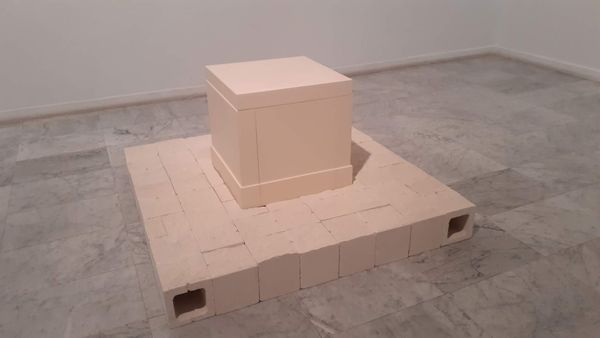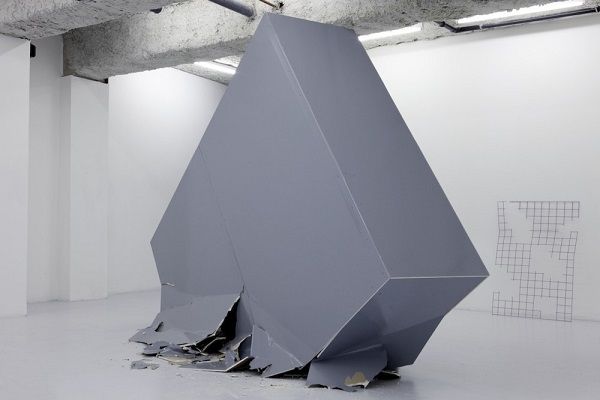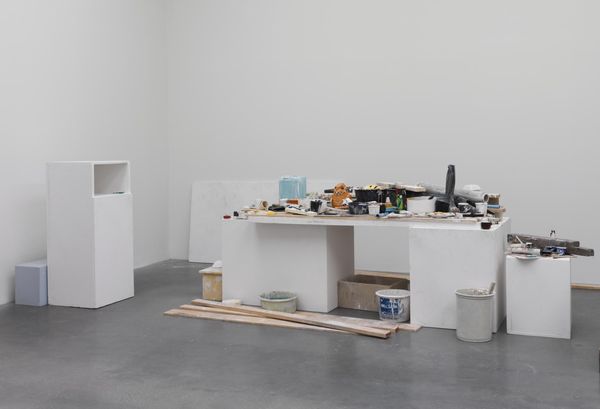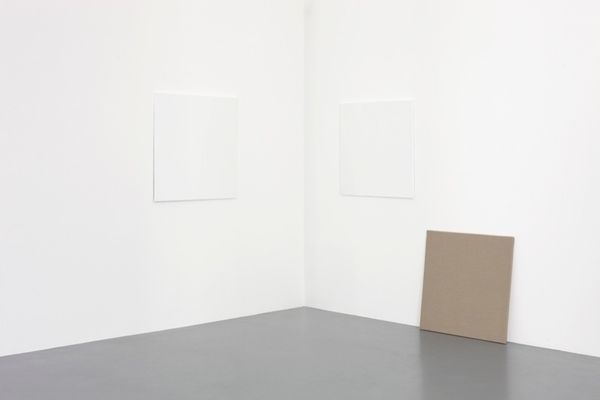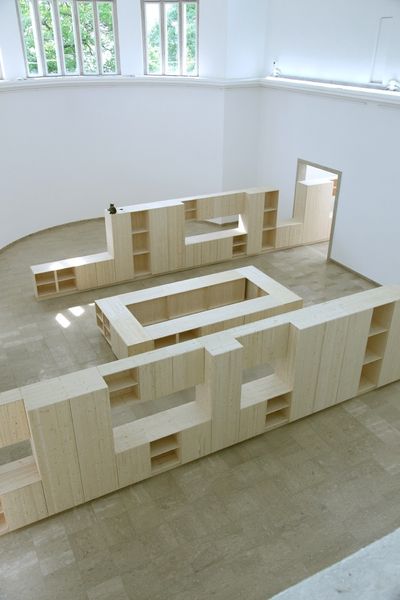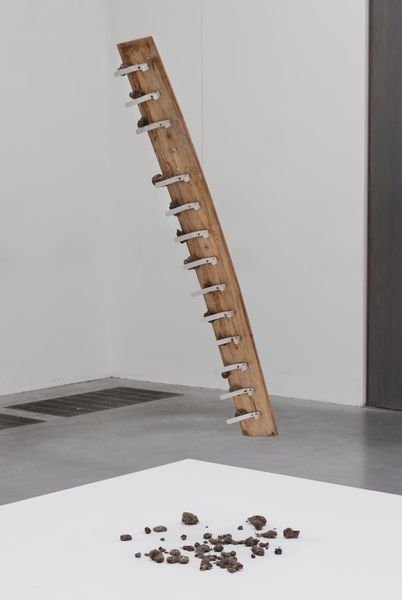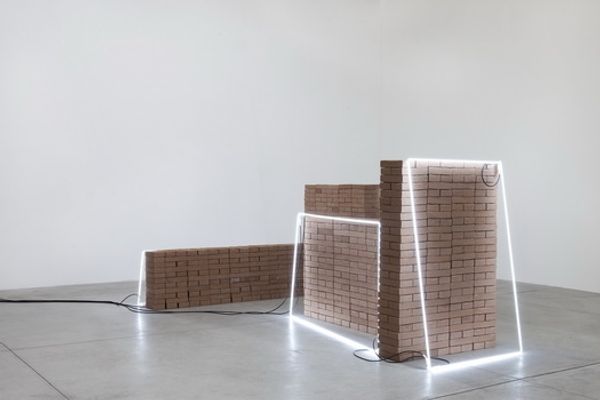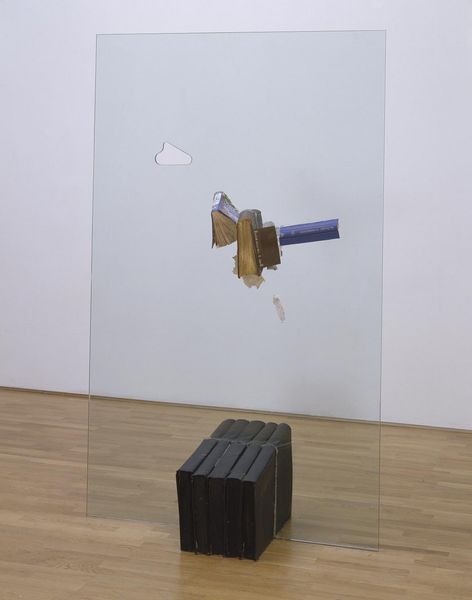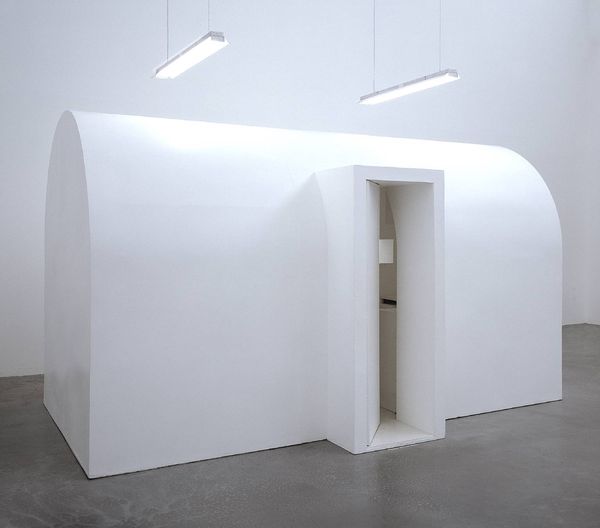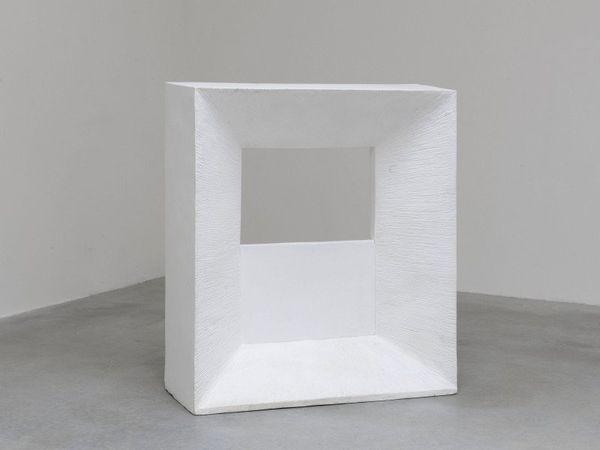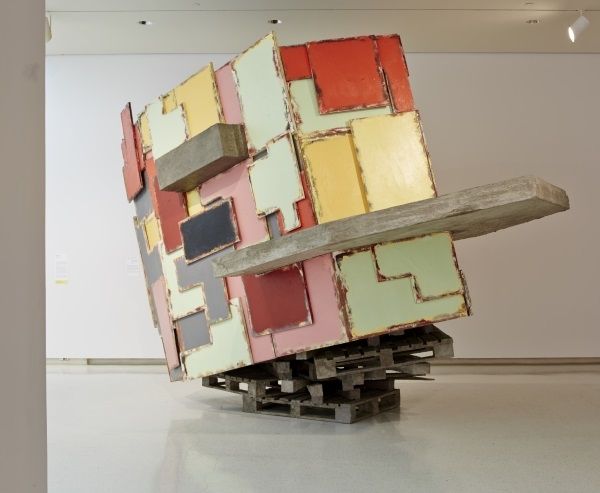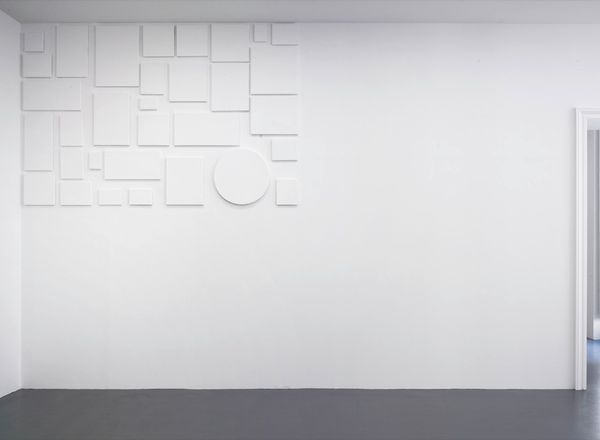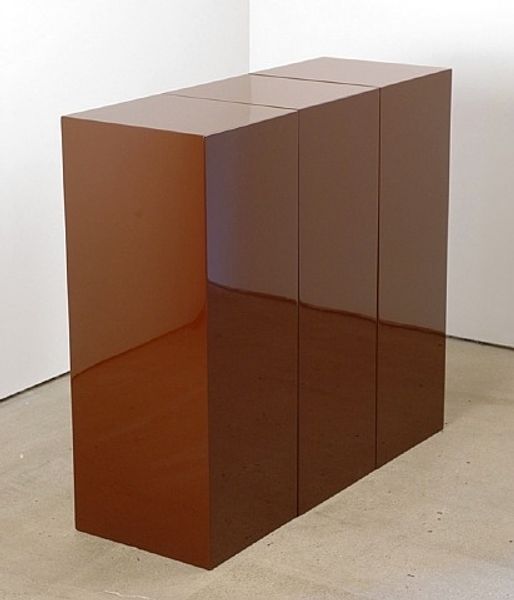
Dimensions: object: 1830 x 2140 x 2550 mm
Copyright: © Jose Carlos Martinat Mendoza | CC-BY-NC-ND 4.0 DEED, Photo: Tate
Curator: Here we have Jose Carlos Martinat Mendoza’s "Brutalism: Stereo Reality Environment 3," part of the Tate Collections. Its dimensions are quite imposing, nearly two meters high and over two meters wide. Editor: My first thought is that the artist wanted to capture something monumental, but in a deceptively flimsy way. The cardboard gives it this raw, unfinished feeling. Curator: Indeed. The use of cardboard as a primary material is fascinating. It forces us to consider the inherent structure and the way form relates to the space around it. Editor: The scattered papers around the base suggest discarded ideas or perhaps even bureaucratic waste. The brutalist aesthetic is mirrored in the discarded papers and the overall mood feels bureaucratic. Curator: The deliberate repetition of rectangular forms creates a visual rhythm, a sort of modularity that's key to understanding its aesthetic intention. It emphasizes the interplay of volumes and voids. Editor: And what do you think the artist is trying to tell us about social structures with this artwork? Curator: It’s about the pure manipulation of form. Editor: Well, regardless, it's quite the statement, prompting us to question materiality and meaning. Curator: Yes, a bold statement of form in space!
Comments
tate 8 months ago
⋮
http://www.tate.org.uk/art/artworks/martinat-mendoza-brutalism-stereo-reality-environment-3-t13251
Join the conversation
Join millions of artists and users on Artera today and experience the ultimate creative platform.
tate 8 months ago
⋮
This sculpture is a scale model of the Peruvian military headquarters, an example of ‘brutalist’ architecture it was nicknamed the ‘Pentagonito’ (or ‘little Pentagon’). During the Fujimori presidency, the building became notorious for the torture, murders and disappearances conducted by the secret service. The sculpture incorporates a computer which has been programmed to search the internet for references to ‘Brutalismo / Brutalism’, picking up extracts about Latin American and global dictatorships but also on architecture, forging associations between different kinds of ‘brutalism’ which it spews out onto the gallery floor. Gallery label, June 2011
